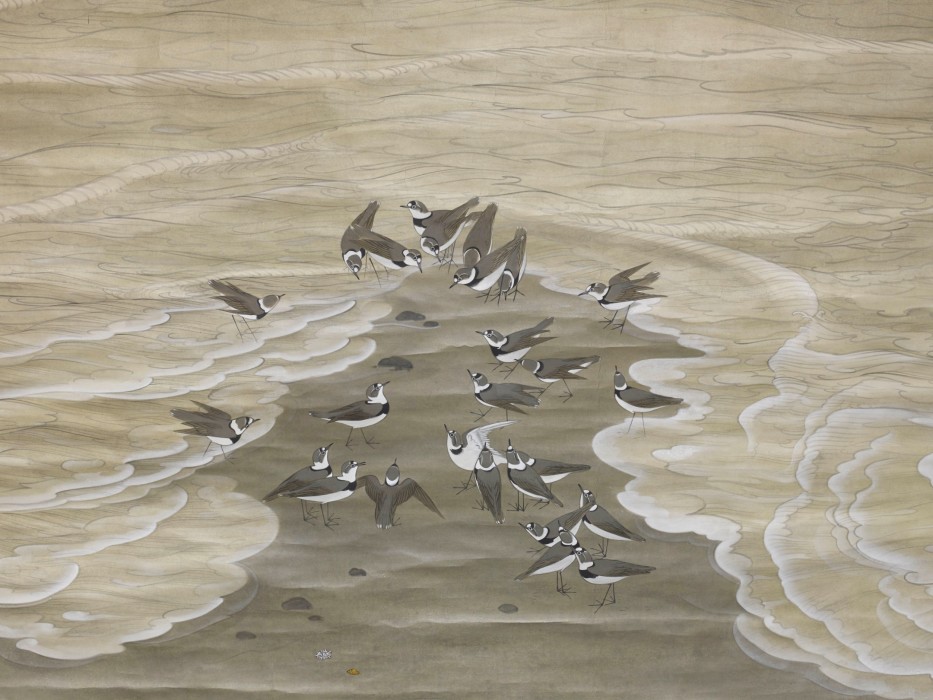Product Description
6722 A silk on paper kakemono (hanging scroll) painted in ink and colour with Jizō Bosatsu. He is wearing floating gold robes applied in kirikane (cut gold) and is seated in kekka fusa (lotus position) on a lotus throne. In his right hand he holds a staff with six rings and in the left hand a hōju (the jewel which grants desires). Separate circular overlapping halos surround the head and the body.
Japan 13th/14th century Kamakura period
Dimensions:
Scroll: H. 40¼” x W. 12” (102 cm x 30.5 cm)
Painting: H. 11” x W. 6” (28 cm x 15 cm)
Images of Jizō Bosatsu (lit. Womb of the Earth), represented as a simple monk, have existed in Japan from the eighth century on, becoming widely worshipped by the masses at the end of the Heian period with the rise of Pure Land (Amida) Buddhism. He is often shown, particularly in paintings, as an attendant of Amida. His powers include the saving of souls condemned to the various Buddhist hells, guarding travellers safely on their way, protecting warriors in battle, watching over the safety of families and aiding women in pregnancy and childbirth.
Jizō is often shown carrying a staff with six rings, which he shakes to awaken us from our delusions. The six rings likewise symbolize the Six States of Desire and Karmic Rebirth and Jizō’s promise to assist all beings in those realms. In Japanese tradition, the six rings, when shaken, make a sound in order to frighten away any insects or small animals in the direct path of the pilgrim, thus ensuring the pilgrim does not accidentally kill any life form. In Chinese traditions, Jizō shakes the six rings to open the doors between the various realms.









